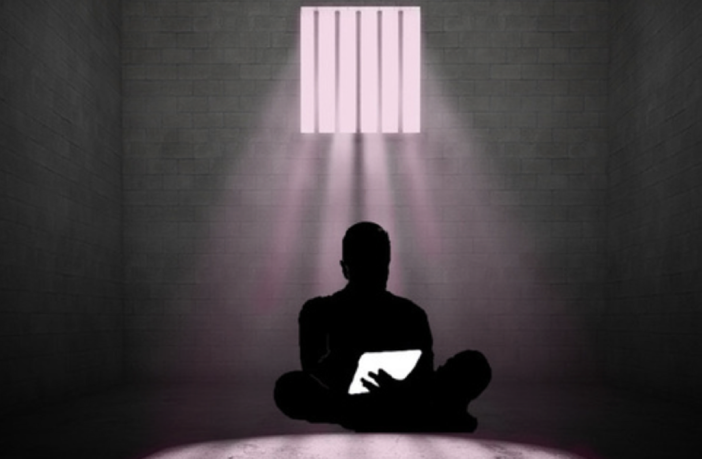Last Updated on April 10, 2023 by BVN
S.E. Williams
April 16, 2023 will mark the 60th anniversary of the date Dr. Martin Luther King Jr. began penning his Letter from a Birmingham Jail.
In the heat of the Civil Rights movement King focused this communication not on the rabid racists who stoked hatred and fought vigorously to maintain a status quo of injustice but instead challenged the conscience of moderates and liberals, ministers and even some Blacks who felt the movement was pushing too hard and trying to go too far, too fast.
During the era that King wrote his compelling appeal from Birmingham, the nation and the world understood his mission and despite the opposition and the complacency of those to whom he addressed his appeal, those of good conscience understood the urgency for change because lives were at risk–and everyone knew it.
Contemporaries of the time lived fully aware that of the injustice, documented the violence and witnessed the pain. For most, it was impossible to turn away.
Can a similar letter stir our conscience today?
Six decades later we face a similar dilemma for civil rights and as communities advocate and the state investigates, rumors of maltreatment and suffering within the confines of Riverside County jails continue, making it one of the most pressing Civil Rights issues of our time.
“Actually, time is neutral. It can be used either destructively or constructively. I am coming to feel that the people of ill will have used time much more effectively than the people of good will. We will have to repent in this generation not merely for the vitriolic words and actions of the bad people but for the appalling silence of the good people.”
Dr. Martin Luther King Jr.,
Letter from a Birmingham Jail
For us to claim ignorance is disingenuous, for us limit concern because we take the position that “all” these individuals are in jail and they “get what they deserve” is woefully ignorant and misguided, and to take the position we should sit back and wait for the Attorney General to complete his “patterns and practices” investigation somehow seems to lack compassion and be untenable when people are being injured and/or dying.
Men and women confined to these facilities do not have the megaphone of King and the way mail is inspected it would probably never leave the confines of the jail. So those confined tentatively pass allegations to family and and other loved ones about being confined to their cells for 23 hours a day and sometimes 24 hours; they use coded language to talk about the brutality of deputies; about being served rotten food; about floors covered with excrement, about guards making veiled and some not so veiled threats and/or knocking them into walls; loud noises blaring on speakers at night so they can’t sleep; inadequate health care; putrid and/or drug laced food, inmates being forced to fight one another while bets are taken, and the list goes on.
These are all concerns expressed though family members who whisper it to the media or others but refrain from wanting to go on record out of an abundance of caution and concern that a loved one still in custody will be identified and suffer further threats and/or harm while in custody.
Do we have proof of these concerns? How can we with a sheriff’s department that is as opaque as concrete.
I can only say “alleged” and point you to the department’s history and the current list of allegations against it including Riverside County jails’ history of deplorable health care that has resulted in severe consequences for inmates up to and including death.
The state’s Attorney General has launched an investigation but the process is certain to be lengthy and once completed, any recommendations will probably crawl along at a snail’s pace. According to an official document titled how the Department of Justice Civil Rights Division Conducts Pattern-or-Practice Investigations, “This process typically takes years. Exactly how long it takes depends upon a number of factors including the commitment of local leadership to making changes.”
In the meantime, sadly, folks may continue to die. Here is why you should care.
Center your mind on justice
A 2020 report showed nearly half a million people (at that time almost 75% of the total number of people in jail nationally) had not been convicted of a crime and of those, 90%, were among the poorest Americans with the least amount of resources. They remained incarcerated because they could not afford the bail.
Recent data shows the pretrial population in county jails has more than doubled in the last 15 to 20 years and is disproportionally Black and Brown. This dramatizes why cash bail is such a glaring example of institutional racism.
Of course, this is not surprising when you consider that Blacks are more likely to be stopped by police, experience police violence at the time of arrest, and may also be poor and unable to afford bail. Or, if resources are available, because bail is often set higher for Blacks than it is for other races, they are forced to choose between retaining an attorney or posting bail.
The risk of dying in jail when you are innocent
A 2022 study by the National Registry of Exonerations titled Race and Wrongful Convictions in the United States noted Black people are 13.6% of the population but 53% of the 3,200 exonerations listed in the National Registry of Exonerations. The report highlighted a heartbreaking truth—that innocent Blacks are seven times more likely than Whites to be (arrested) and falsely convicted of serious crimes. This is another clear testament to the structural and institutional racism in the criminal justice system that must be deconstructed.
Exonerations by Race of Defendant and Type of Crime
“There is no one explanation for the heavy concentration of Black defendants among those convicted of crimes they did not commit. The causes we have identified run from inevitable consequences of patterns in crime and punishment to deliberate acts of racism, with many steps in between. They differ sharply from one type of crime to another.” Source: commonwealthfund.org). (la)
As of 2002 (the last time the government collected this data nationally), about 29% of people in local jails were unconvicted –meaning locked up while awaiting trial or another hearing. Nearly 7 in 10 (69%) of these detainees were people of color, with Black (43%) and Hispanic (19.6%) defendants especially overrepresented compared to their share of country’s population. Since then, pretrial populations have nearly doubled in size and those who are awaiting trial make up nearly two-thirds of jail populations.
This results in even more potentially innocent people than ever at risk of harm in county jails. And yet, the U.S. proclaims a doctrine, a mantra rooted in a 1895 U.S. Supreme Court case which stated, “it is better to let the crime of a guilty person go unpunished than to condemn the innocent.” This doctrine dates back to Roman law. But due to systemic injustice this doctrine is illusive for Blacks.
Those sitting in Riverside County jails fearing for their lives would relish having the freedom to pen a letter to the world detailing their experiences but we all know that is not tenable. So while incarcerated but fear there may be consequences. For this reason we must continue to advocate on their behalf. It was community action and coalition building that compelled the state attorney general to act. But now is not the time to sit back and wait for results that we know will be long in coming.
We must support organizations doing the hard work in support of system impacted individuals and families like All of Us or None, Starting Over, the Underground Scholars Initiative, Project Rebound, Family Reunification, the Equity and Empowerment Project, Project Rebound, Essie Justice, Inc., the ACLU and others.
Solutions are in process but as noted noted by the Prison Policy Institute, local advocates and policymakers alike need access to current data about who is held pretrial in their counties and states, who is being injured and who is dying in custody. This information must be disaggregated by race, age, sexual orientation, mental health status, housing status, etc. This will help identify patterns and inform necessary legislative changes.
Of course, this is just my opinion. I’m keeping it real.



